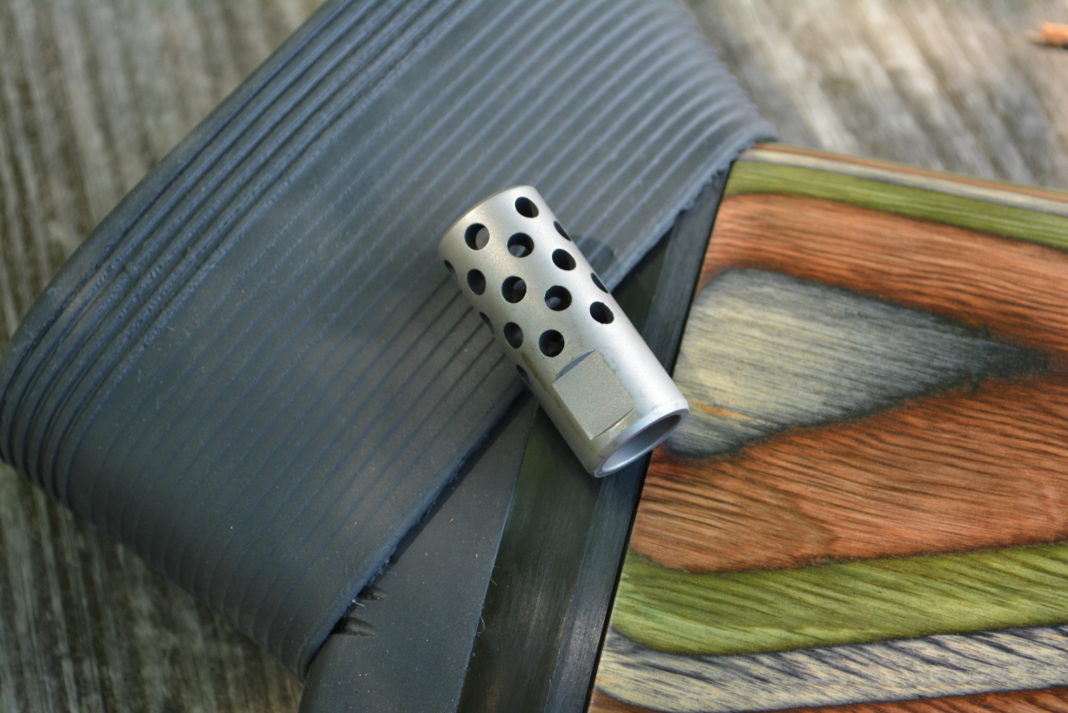The fear of snakes and recoil are similar in one respect. Your chances of being bitten by a poisonous snake are extremely small, just like the probability of being injured by a recoiling shotgun or rifle. Still, the fear of either event can take the pleasure out of an enjoyable outdoor experience. Snake boots are one solution for ophidiophobia (the fear of snakes), and there are other remedies for the recoil-sensitive. The most obvious is to change guns or reduce the load. The stock design or light weight of some rifles accentuate felt recoil, so even a .270 Winchester or .30-06 Springfield can be painful to shoot. Both Remington and Federal make reduced-recoil ammunition that perform at moderate ranges without the bite at the shoulder.
 I’m prepping for an elk hunt in Colorado which will require a large-caliber rifle, and I opted for the new Ruger Guide Gun in .338 RCM. This is a very powerful round, yet the Winchester Short Magnums and Ruger Compact Magnums use special powders that maximize bullet performance with less felt recoil. Additionally, Ruger’s Guide Gun comes with a padded butt pad and a muzzle brake.
I’m prepping for an elk hunt in Colorado which will require a large-caliber rifle, and I opted for the new Ruger Guide Gun in .338 RCM. This is a very powerful round, yet the Winchester Short Magnums and Ruger Compact Magnums use special powders that maximize bullet performance with less felt recoil. Additionally, Ruger’s Guide Gun comes with a padded butt pad and a muzzle brake.
Muzzle brakes decrease felt recoil of rifles from 30–50%, depending on the model, yet cause excessive muzzle blast up to 130 dB, a level dangerous to hearing. Savvy shooters often wear inner-ear protection under shooting muffs when firing heavy magnum rifles with brakes. Limbsaver makes a Slip-On Recoil Pad, advertised to reduce recoil by up to 70%, which provides the option of comfortably firing a heavy recoiling rifle without a break. After firing the rifle in a number of brake/no-brake configurations, I’ll use the Limbsaver recoil pad and the brake in bench-preparation sessions (where I’ll have adequate ear protection), but replace the brake with the included counterweight on the hunt.
Check out the manufacturer’s websites to see Limbsaver’s recoil pads and Ruger’s cool new rifle.









![The Best Deer Camp Chili [VIDEO] Deer Chili Ingredients, Tomatoes, Chili Spices](/wp-content/uploads/2015/10/Deer-Chili-Deer-Camp-Recipe-218x150.jpg)








![How to Call Elk Early in the Season [VIDEO]](/wp-content/uploads/2016/08/byers003-218x150.jpg)




![Idiots Disturb Hunter: How Would You Have Handled It? [VIDEO]](/wp-content/uploads/2015/10/DSC00110-e1474487693878-100x70.jpg)
![Albino Buck Shocked to Shed His Antlers [VIDEO]](/wp-content/uploads/2015/10/AlbinoDeer-100x70.jpg)